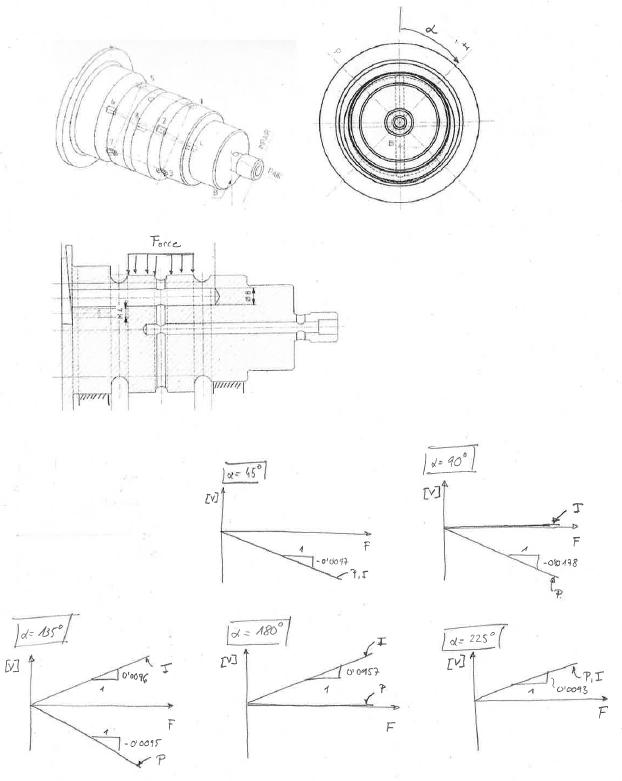Dear experts,
In order to measure radial load on a shaft, 8 strain gauges on two full Wheatstone bridge circuits have been used.

Each bridge circuit refers to a measuring plane (namely I and P).
Radial force as well as voltage signal from two planes is measured for 5 different shaft angular positions (alpha=45, 90, 135, 180 and 225deg).
When load is aligned with plane I (alpha=180deg), we get a certain gain relating measured volts on plane I and measured force (factor_I= 0.0157V/kN). No signal is measured on plane P, as it corresponds to the shaft's neutral axis.
When load is aligned with plane P (alpha=90deg), we get a certain gain relating measured volts on plane P and measured force (factor_P= -0.0178V/kN). No signal is measured on plane I, as it corresponds to the shaft's neutral axis.
When load is 45deg from both planes, we get a gain of +/-0.0097 (depending on plane and shaft position).
Is there a way to calculate the gain at any shaft angular position based on factor_I and factor_P?
Thank you very much.
Regards,
In order to measure radial load on a shaft, 8 strain gauges on two full Wheatstone bridge circuits have been used.

Each bridge circuit refers to a measuring plane (namely I and P).
Radial force as well as voltage signal from two planes is measured for 5 different shaft angular positions (alpha=45, 90, 135, 180 and 225deg).
When load is aligned with plane I (alpha=180deg), we get a certain gain relating measured volts on plane I and measured force (factor_I= 0.0157V/kN). No signal is measured on plane P, as it corresponds to the shaft's neutral axis.
When load is aligned with plane P (alpha=90deg), we get a certain gain relating measured volts on plane P and measured force (factor_P= -0.0178V/kN). No signal is measured on plane I, as it corresponds to the shaft's neutral axis.
When load is 45deg from both planes, we get a gain of +/-0.0097 (depending on plane and shaft position).
Is there a way to calculate the gain at any shaft angular position based on factor_I and factor_P?
Thank you very much.
Regards,
